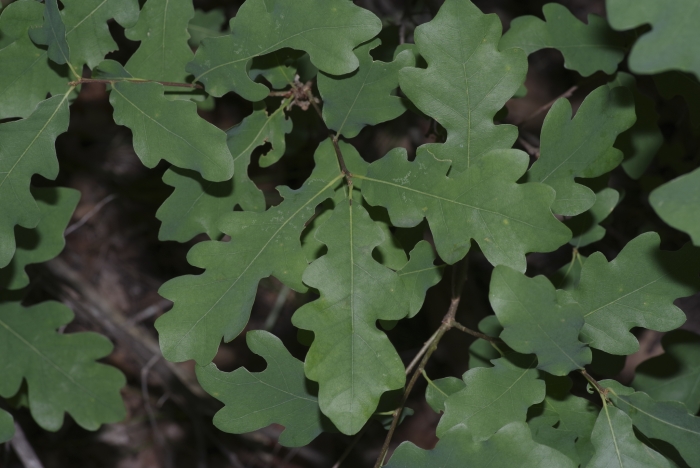Lacey Oak
(Quercus laceyi)
Lacey Oak (Quercus laceyi)
/
/

Michelle W.
CC BY 4.0
Image By:
Michelle W.
Recorded By:
Copyright:
CC BY 4.0
Copyright Notice:
Photo by: Michelle W. | License Type: CC BY 4.0 | License URL: http://creativecommons.org/licenses/by/4.0/ | Rights Holder: Michelle W. | Publisher: iNaturalist | Date Created: 2020-05-08T11:42:47-07:00 |



















































Estimated Native Range
Summary
Quercus laceyi, commonly known as Lacey Oak, is a small to medium-sized deciduous tree native to the limestone hills and canyons of central Texas, often found in rocky or gravelly soils. It is well-adapted to the hot, dry climate of its native range and typically grows to a height of 30-35 feet (9-11 meters) with a trunk diameter of 1-2 feet (0.3-0.6 meters). The Lacey Oak has a rounded crown with a stocky trunk and stout branches. Its distinctive blue-green leaves are oblong and shallowly lobed to unlobed, while shade leaves may be deeply lobed; they often turn attractive shades of yellow or brown in autumn. The tree produces inconspicuous yellowish-green catkins in spring.
Lacey Oak is valued for its drought tolerance and ornamental foliage, making it an excellent choice for xeriscaping and as a shade tree in water-conserving landscapes. It is also used in urban settings due to its adaptability to various soil types, though it prefers alkaline, well-drained soils. This oak is relatively low-maintenance, requiring minimal water once established and full sun to part shade exposure. While it is not commonly afflicted by serious pests or diseases, oak wilt can be a concern. It is also less susceptible to iron chlorosis than other oaks. Gardeners should be aware that it may produce a moderate amount of leaf litter in the fall.CC BY-SA 4.0
Lacey Oak is valued for its drought tolerance and ornamental foliage, making it an excellent choice for xeriscaping and as a shade tree in water-conserving landscapes. It is also used in urban settings due to its adaptability to various soil types, though it prefers alkaline, well-drained soils. This oak is relatively low-maintenance, requiring minimal water once established and full sun to part shade exposure. While it is not commonly afflicted by serious pests or diseases, oak wilt can be a concern. It is also less susceptible to iron chlorosis than other oaks. Gardeners should be aware that it may produce a moderate amount of leaf litter in the fall.CC BY-SA 4.0
Plant Description
- Plant Type: Tree
- Height: 15-35 feet
- Width: 10-20 feet
- Growth Rate: Moderate
- Flower Color: N/A
- Flowering Season: Spring
- Leaf Retention: Deciduous
Growth Requirements
- Sun: Full Sun
- Water: Low
- Drainage: Medium, Fast
Common Uses
Bee Garden, Bird Garden, Butterfly Garden, Drought Tolerant, Low Maintenance, Rabbit Resistant
Natural Habitat
Limestone hills and canyons of central Texas
Other Names
Common Names: Lacey’s Oak
Scientific Names: , Quercus laceyi, Quercus porphyrogenita, Quercus microlepis, Quercus breviloba f. laceyi, Quercus breviloba subsp. laceyi,
GBIF Accepted Name: Quercus laceyi Small